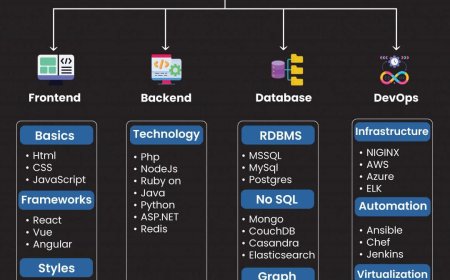How to visit the Henry Doorly Zoo
How to Visit the Henry Doorly Zoo The Henry Doorly Zoo and Aquarium, located in Omaha, Nebraska, is consistently ranked among the top zoos in the world. Renowned for its groundbreaking exhibits, immersive habitats, and commitment to conservation, it attracts over 1.3 million visitors annually. Whether you’re planning a family outing, a solo educational trip, or a romantic afternoon surrounded by w
How to Visit the Henry Doorly Zoo
The Henry Doorly Zoo and Aquarium, located in Omaha, Nebraska, is consistently ranked among the top zoos in the world. Renowned for its groundbreaking exhibits, immersive habitats, and commitment to conservation, it attracts over 1.3 million visitors annually. Whether you’re planning a family outing, a solo educational trip, or a romantic afternoon surrounded by wildlife, knowing how to visit the Henry Doorly Zoo effectively can transform a simple day out into a memorable, seamless experience. This guide provides a comprehensive, step-by-step roadmap to ensure you make the most of your visit — from pre-trip planning to post-visit reflection. Understanding the logistics, timing, exhibits, and hidden gems of the zoo not only enhances enjoyment but also supports its mission of wildlife preservation and environmental education.
Visiting the Henry Doorly Zoo isn’t just about seeing animals — it’s about engaging with ecosystems, learning about biodiversity, and connecting with nature in ways few urban spaces can offer. With expansive indoor rainforests, desert domes, nocturnal houses, and one of the world’s largest indoor aquariums, the zoo challenges conventional perceptions of what a zoo can be. To navigate this vast, multi-faceted attraction successfully, visitors need more than just a map — they need strategy, awareness, and informed preparation. This tutorial equips you with everything you need to know to plan, execute, and maximize your visit to one of the most exceptional zoological institutions on the planet.
Step-by-Step Guide
Step 1: Research and Plan Your Visit Date
Before purchasing tickets or setting out for Omaha, take time to research the best dates for your visit. The Henry Doorly Zoo operates year-round, but seasonal variations significantly impact your experience. Spring (April–May) and fall (September–October) offer mild temperatures and smaller crowds, making them ideal for comfortable exploration. Summer months (June–August) bring peak attendance and longer daylight hours, perfect for enjoying outdoor exhibits like the Desert Dome and the Lied Jungle. However, expect larger crowds and potential wait times at popular attractions.
Check the zoo’s official calendar for special events such as Zoo Lights (a holiday light display), conservation-themed days, or animal feedings. Avoid visiting on major holidays like Memorial Day, Fourth of July, or Labor Day unless you’re prepared for extended lines. Weekdays, particularly Tuesday through Thursday, are typically the least crowded. If you’re traveling with children, consider school break schedules — visiting during a school week can mean fewer families and shorter queues.
Step 2: Purchase Tickets in Advance
One of the most overlooked yet critical steps in planning your visit is buying tickets ahead of time. While walk-up tickets are available at the main entrance, purchasing online guarantees entry and often saves money. The zoo offers tiered pricing based on age, residency, and membership status. Adults, seniors (65+), children (3–12), and infants (under 3) all have different rates. Nebraska residents may qualify for discounted admission on select days — always verify current promotions on the official website.
Online ticketing also allows you to select a specific entry time, helping manage crowd flow and reducing wait times. Timed-entry tickets are especially useful during peak seasons. When purchasing, consider upgrading to a combo ticket that includes access to the aquarium, the Lied Jungle, and the Desert Dome — all included in general admission, but sometimes bundled for convenience. Avoid third-party resellers; always buy directly from henrydoorlyzoo.com to ensure validity and access to digital passes.
Step 3: Review the Zoo Map and Plan Your Route
The Henry Doorly Zoo spans 130 acres and contains over 17,000 animals across 950+ species. Without a plan, it’s easy to miss key exhibits or waste time backtracking. Download the official zoo map from the website or use the interactive map available on the zoo’s mobile app. Print a physical copy if you prefer, but digital versions update in real time with show schedules and exhibit closures.
Group exhibits by geographic region or theme to optimize your route. For example: start with the Lied Jungle (the world’s largest indoor rainforest), then proceed to the Desert Dome (featuring a massive sand dune and live desert species), followed by the Kingdoms of the Night (a dimly lit nocturnal animal house). End your day with the Scott Aquarium, which houses thousands of marine creatures including sharks, stingrays, and a 140,000-gallon coral reef tank.
Use the “Must-See” checklist on the website to prioritize. Many visitors overlook the Butterfly and Insect Pavilion, which offers a serene, immersive experience with live butterflies fluttering freely. Allocate at least 30 minutes for this exhibit — it’s often less crowded and provides a peaceful contrast to the larger animal habitats.
Step 4: Arrive Early and Park Strategically
Arriving early — ideally 30 to 45 minutes before opening — gives you a significant advantage. The zoo opens at 9:00 a.m. daily, and the first hour is typically the quietest. You’ll have ample opportunity to photograph animals without crowds, enjoy shorter lines at gift shops, and secure prime seating at feeding demonstrations.
Parking is free and plentiful, with over 4,000 spaces available. The main parking lot is located directly across from the main entrance. For visitors with mobility needs, designated accessible parking is available near the entrance. If you’re arriving with a large group or during a special event, consider parking in the overflow lot and using the zoo’s complimentary shuttle service, which runs every 15 minutes.
Pro tip: If you’re visiting in winter, arrive with a full tank of gas and wear appropriate footwear — the parking lot can become icy. The zoo’s sidewalks are cleared regularly, but wet or snowy conditions can make walking slippery.
Step 5: Utilize the Zoo’s Mobile App
The Henry Doorly Zoo mobile app is an indispensable tool for visitors. Available for iOS and Android, it offers real-time exhibit maps, live animal cams, show schedules, restroom locations, dining options, and even wait times for popular attractions. The app also sends push notifications for special animal feedings or last-minute exhibit closures.
Use the app’s “My Itinerary” feature to build a custom schedule. You can bookmark exhibits, set reminders for feeding times (such as the 11:30 a.m. sea lion show or the 2:00 p.m. giraffe feeding), and receive alerts when you’re near a location you’ve marked. The app also includes educational content — fun facts about each species, conservation stories, and behind-the-scenes insights from zookeepers.
Download the app before you arrive to ensure it works properly on your device. Cellular reception is strong throughout the zoo, but having offline access to your itinerary ensures you won’t lose your plan if connectivity drops.
Step 6: Understand Animal Feeding and Show Schedules
Animal feedings and keeper talks are among the most engaging parts of a zoo visit. These scheduled events offer rare opportunities to observe animal behavior up close and learn directly from trained staff. Do not miss the following key events:
- Sea Lion Show – Held daily at 11:30 a.m. and 3:30 p.m. in the Sea Lion Pavilion. This high-energy performance includes acrobatics and interactive training demonstrations.
- Giraffe Feeding – Available daily at 2:00 p.m. (weather permitting). Visitors can purchase feeding tokens ($5) to hand-feed giraffes from an elevated platform.
- Big Cat Feeding – Daily at 10:30 a.m. and 4:00 p.m. in the Cat Forest exhibit. Keepers discuss hunting behaviors and conservation challenges facing lions, tigers, and leopards.
- Reptile and Amphibian Talk – Held twice daily at 11:00 a.m. and 3:00 p.m. Learn about venomous snakes, rare frogs, and the zoo’s breeding programs.
Arrive 10–15 minutes early to secure a good viewing spot. These talks are free with admission and often fill up quickly. Don’t hesitate to ask questions — keepers are passionate educators and love sharing their knowledge.
Step 7: Eat Smart and Stay Hydrated
The zoo offers a wide range of dining options, from quick snacks to full-service restaurants. Popular choices include:
- Wildlife Grill – Located near the main entrance, offering burgers, sandwiches, and salads.
- Desert Grill – Near the Desert Dome, serving Southwestern-inspired dishes and refreshing smoothies.
- The Rainforest Café – Inside the Lied Jungle, offering tropical-themed meals and kid-friendly options.
- Snack Carts – Strategically placed throughout the zoo for ice cream, popcorn, and bottled drinks.
Consider bringing a refillable water bottle — water fountains are located near every major exhibit and restroom. Many visitors overlook the value of packing a small, non-perishable snack (like granola bars or fruit) to keep energy levels up between meals. The zoo allows outside food and non-alcoholic beverages, so you can save money and cater to dietary needs.
For families, the “Kids Eat Free” promotion on select days can be a major cost-saver. Check the website for current offers. If you’re celebrating a birthday or special occasion, inquire about the zoo’s private dining options — some areas can be reserved for groups.
Step 8: Explore Exhibits Thoroughly and Slowly
It’s tempting to rush through the zoo to “see everything,” but the Henry Doorly Zoo is designed for immersion. Take your time in each exhibit. Sit on the benches. Observe animal behavior. Read the interpretive signage. Many visitors miss subtle details — like the way a chameleon changes color, or how a Komodo dragon uses its tongue to detect scent.
Pay special attention to the Orangutan Forest, where visitors can watch these intelligent primates interact through a large glass wall. The Asian Elephants exhibit includes a 2-acre outdoor yard with a mud wallow and a 100,000-gallon pool — one of the largest in any zoo. The Red Panda Forest is a quiet, shaded area perfect for quiet contemplation.
Don’t skip the Butterfly Garden — it’s climate-controlled, quiet, and filled with hundreds of free-flying butterflies. Children and adults alike are often mesmerized by the delicate beauty of this space. Allow 20–30 minutes to wander slowly, breathe deeply, and take photos without flash.
Step 9: Use Accessibility and Family Services
The Henry Doorly Zoo is fully accessible and designed with families in mind. Wheelchair and stroller rentals are available at the main entrance for a nominal fee. Electric convenience vehicles (ECVs) can also be reserved in advance for guests with mobility impairments.
Family restrooms and nursing rooms are located near major exhibits. The zoo offers sensory-friendly maps and quiet zones for guests with autism or sensory sensitivities. These areas provide dim lighting, minimal noise, and comfortable seating. Request a sensory guide at the guest services desk or download it from the website.
Children’s activity packs — including scavenger hunts, coloring sheets, and animal trivia — are available for free at the Welcome Center. These are excellent for keeping younger visitors engaged and turning the visit into an educational game.
Step 10: End Your Visit with a Gift and Reflection
Before leaving, consider stopping by the Zoo Gift Shop or the Conservation Store. Proceeds from all merchandise support the zoo’s global conservation efforts, including field research, habitat restoration, and species breeding programs. Items range from plush animals and books to sustainable apparel and locally made crafts.
Take a moment to reflect on what you’ve learned. Did a particular animal capture your attention? Did you learn something surprising about conservation? Many visitors leave inspired to reduce plastic use, support ethical wildlife tourism, or even volunteer with local environmental groups. The zoo’s mission is not just entertainment — it’s advocacy. Your visit contributes directly to saving species in the wild.
Best Practices
Plan for Weather and Seasonal Conditions
Omaha experiences all four seasons, and the zoo’s outdoor exhibits are affected by temperature and precipitation. In summer, wear sunscreen, a hat, and light clothing. Bring a reusable water bottle and consider a portable fan. In winter, dress in layers — even indoor exhibits like the Lied Jungle are kept cool to mimic natural habitats. Rain is common in spring and fall; pack a compact umbrella or lightweight raincoat. Snow can make paths slippery, so wear non-slip shoes.
Stay Hydrated and Energized
Walking 5–7 miles in a single day is common at the zoo. Dehydration and low blood sugar can quickly dampen your experience. Drink water regularly, even if you don’t feel thirsty. Eat balanced snacks — protein and complex carbs help maintain energy. Avoid heavy meals right before walking long distances.
Respect Animal Welfare and Exhibit Rules
Never tap on glass, throw objects, or attempt to feed animals. Even well-intentioned actions can stress wildlife or disrupt their diets. Follow all posted signs — many animals are sensitive to loud noises or bright lights. Flash photography is prohibited in nocturnal exhibits. Keep children close and supervise them at all times. The zoo’s animals are not performers — they are living beings deserving of dignity and quiet observation.
Minimize Environmental Impact
The Henry Doorly Zoo is a leader in sustainability. You can support this mission by using reusable containers, recycling properly, and avoiding single-use plastics. The zoo provides recycling bins throughout the grounds. Choose digital tickets over paper. Skip plastic souvenirs — opt for sustainable or ethically sourced items. Every small action contributes to the zoo’s broader environmental goals.
Engage with Conservation Messaging
Each exhibit includes educational panels explaining the conservation status of the species on display. Take time to read them. Many animals at the zoo — such as the Sumatran orangutan, Amur leopard, and African elephant — are critically endangered in the wild. The zoo participates in Species Survival Plans (SSPs) and funds field projects worldwide. Understanding this context turns a fun day into a meaningful one.
Use Technology Responsibly
While the mobile app is invaluable, avoid spending your entire visit staring at your phone. Put it away during feeding talks, while watching animals, or when taking photos. Be present. The most memorable moments often happen spontaneously — a lion yawning, a sloth climbing slowly, a parrot mimicking a keeper’s voice. These are the experiences that stay with you long after the day ends.
Consider a Multi-Day Visit
Many visitors don’t realize the Henry Doorly Zoo is large enough to warrant more than one day. If you have the time, consider splitting your visit. Spend one day on the indoor exhibits (Lied Jungle, Desert Dome, Aquarium) and another on the outdoor areas (Big Cat Forest, Asian Elephants, African Grasslands). This reduces fatigue and allows for deeper engagement with each habitat. Multi-day passes are available at a discounted rate.
Bring a Journal or Sketchbook
For those who enjoy reflection or art, bringing a small notebook or sketchpad can enhance your experience. Record observations, draw animals, or write down questions to research later. This practice deepens learning and creates a personal keepsake of your visit.
Tools and Resources
Official Website: henrydoorlyzoo.com
The primary resource for all visitor information. Here you’ll find current hours, ticket pricing, event calendars, animal profiles, conservation updates, and downloadable maps. The site is mobile-optimized and updated in real time.
Mobile App: Henry Doorly Zoo & Aquarium
Available on iOS and Android. Includes interactive map, real-time show schedules, animal feedings, restroom locations, and personalized itineraries. Push notifications alert you to closures or special events.
Interactive Online Map
Accessible via the website, this map allows you to zoom in on exhibits, click for photos and facts, and plan your route before arrival. You can print a PDF version or save it to your device.
Conservation Partnerships Page
Learn about the zoo’s global initiatives, including work in Madagascar, Nepal, and the Amazon. Discover how your visit supports field biologists, anti-poaching units, and habitat restoration.
Virtual Tours and Live Cams
Before your visit, explore the zoo’s live animal cams. Watch elephants at dusk, orangutans in the canopy, or sea lions swimming. These cams are also useful for children who may be anxious about visiting — familiarizing them with the environment in advance reduces stress.
Educational Resources for Teachers and Parents
The zoo offers free downloadable curriculum guides aligned with state and national science standards. These include pre- and post-visit activities, vocabulary lists, and discussion prompts. Ideal for homeschoolers and school groups.
Third-Party Travel Platforms
While the zoo’s official site is always the best source, platforms like Tripadvisor and Google Maps offer authentic visitor reviews, photos, and tips. Look for recent reviews (within the last 3–6 months) for the most accurate information on wait times and crowd levels.
Local Transportation and Accommodations
Omaha is easily accessible via I-80 and I-29. If you’re traveling from out of town, consider staying at one of the many hotels within 10 minutes of the zoo. The Hilton Omaha, Embassy Suites, and Hyatt House offer family-friendly packages and shuttle services. Public transit (Metro Transit) runs routes near the zoo, but a personal vehicle is recommended for convenience.
Volunteer and Membership Programs
For frequent visitors, consider a zoo membership. Members receive free admission for a year, discounts on events and merchandise, early access to tickets, and invitations to exclusive behind-the-scenes tours. Membership directly supports animal care and conservation. Volunteer opportunities are also available for teens and adults interested in education, animal care, or event support.
Real Examples
Example 1: The Smith Family — A First-Time Visit
The Smiths, a family of four from Kansas City, planned their first trip to the Henry Doorly Zoo for a weekend in May. They purchased tickets online two weeks in advance and downloaded the app. They arrived at 8:30 a.m., parked near the main entrance, and headed straight to the Lied Jungle before crowds arrived. They spent 90 minutes exploring the rainforest, watching poison dart frogs and howler monkeys. They used the app to time their visit to the giraffe feeding at 2:00 p.m., where their 7-year-old daughter got to feed a giraffe. They skipped the crowded Sea Lion Show and opted for the Reptile Talk instead, which they found more intimate and educational. They packed snacks and water bottles, saving over $20 on food. They ended the day at the Conservation Store, where they bought a reusable tote bag featuring a snow leopard — a reminder of their visit and a symbol of their support for wildlife protection.
Example 2: A Solo Visitor — Environmental Science Student
Jamal, a college student studying conservation biology, visited the zoo on a weekday in October to observe animal behavior for a research project. He arrived early, used the app to map out the most active animal zones, and spent four hours taking notes on elephant social interactions and giraffe feeding techniques. He attended the Big Cat Feeding and asked the keeper detailed questions about enrichment strategies. He used the free Wi-Fi in the visitor center to upload his field notes and accessed the zoo’s online database of SSP programs. He left with a list of five conservation organizations to follow and a renewed passion for fieldwork. He later wrote a blog post about his experience, which was featured on the zoo’s education blog.
Example 3: A Couple Celebrating an Anniversary
Marie and David celebrated their 10th anniversary with a quiet day at the zoo. They avoided crowds by visiting on a Tuesday in September. They started with the Butterfly Pavilion, where they walked hand-in-hand among hundreds of colorful wings. They had lunch at the Rainforest Café, ordered wine (available at select locations), and shared a chocolate-dipped strawberry. They skipped the high-energy shows and instead sat quietly in the Orangutan Forest, watching a mother cradle her infant. They took photos not for social media, but for their personal album. At the end of the day, they donated $50 to the zoo’s rhino conservation fund in honor of their anniversary. They returned the following year — this time with a friend.
FAQs
How long does it take to see the entire Henry Doorly Zoo?
Most visitors spend 5–7 hours exploring the entire zoo. If you want to see every exhibit, attend all the shows, and take your time, plan for a full day. A rushed visit can be done in 3–4 hours, but you’ll miss much of the depth and detail.
Is the Henry Doorly Zoo wheelchair accessible?
Yes. All exhibits, pathways, restrooms, and dining areas are fully accessible. Wheelchairs and ECVs are available for rent. Service animals are welcome.
Can I bring my own food and drinks?
Yes. Outside food and non-alcoholic beverages are permitted. Coolers are allowed but subject to inspection. Glass containers and alcohol are prohibited.
Are there any age restrictions for the exhibits?
No. All exhibits are suitable for all ages. However, some areas like Kingdoms of the Night are dimly lit and may be unsettling for very young children. The Butterfly Pavilion is ideal for all ages.
Can I bring a stroller?
Yes. Strollers are allowed and recommended, especially for families with young children. Stroller parking is available at exhibit entrances.
What should I do if I get separated from my group?
Designate a meeting point before entering the zoo — the main entrance or the Welcome Center are ideal. Use the app to locate nearby staff. Zoo personnel wear bright green shirts and can assist you. Lost children are taken to the Guest Services desk.
Are there any discounts for military, seniors, or students?
Yes. Military personnel, seniors (65+), and college students with valid ID receive discounted admission. Check the website for current rates and required documentation.
Can I take photos inside the zoo?
Yes. Photography is encouraged for personal use. Flash photography is prohibited in nocturnal exhibits and near sensitive animals. Tripods and drones are not permitted without prior approval.
Is the zoo open during holidays?
Yes. The zoo is open daily, including holidays. Hours may vary on major holidays — always check the website before visiting.
How can I support the zoo’s conservation efforts?
By visiting, you’re already supporting them. You can also donate directly, adopt an animal, become a member, or volunteer. Proceeds fund global field projects and animal care.
Conclusion
Visiting the Henry Doorly Zoo is more than a recreational outing — it’s an immersive journey into the natural world, a lesson in biodiversity, and a step toward global conservation. By following this guide, you’ve equipped yourself with the knowledge to navigate this extraordinary place with confidence, curiosity, and care. From purchasing tickets in advance to understanding animal behavior, from using the mobile app to respecting wildlife boundaries, every action you take contributes to a richer experience — for you and for the animals.
The zoo’s mission is not just to display nature, but to inspire stewardship. As you leave, carry with you not just photos and souvenirs, but a deeper understanding of the fragile ecosystems that sustain life on Earth. Whether you’re a first-time visitor or a returning enthusiast, each trip offers new discoveries. Let this guide be your foundation — and let your own wonder be your compass.
Plan wisely. Explore thoughtfully. Leave lightly. And remember — every visit helps protect a species that might otherwise vanish from our planet.





















